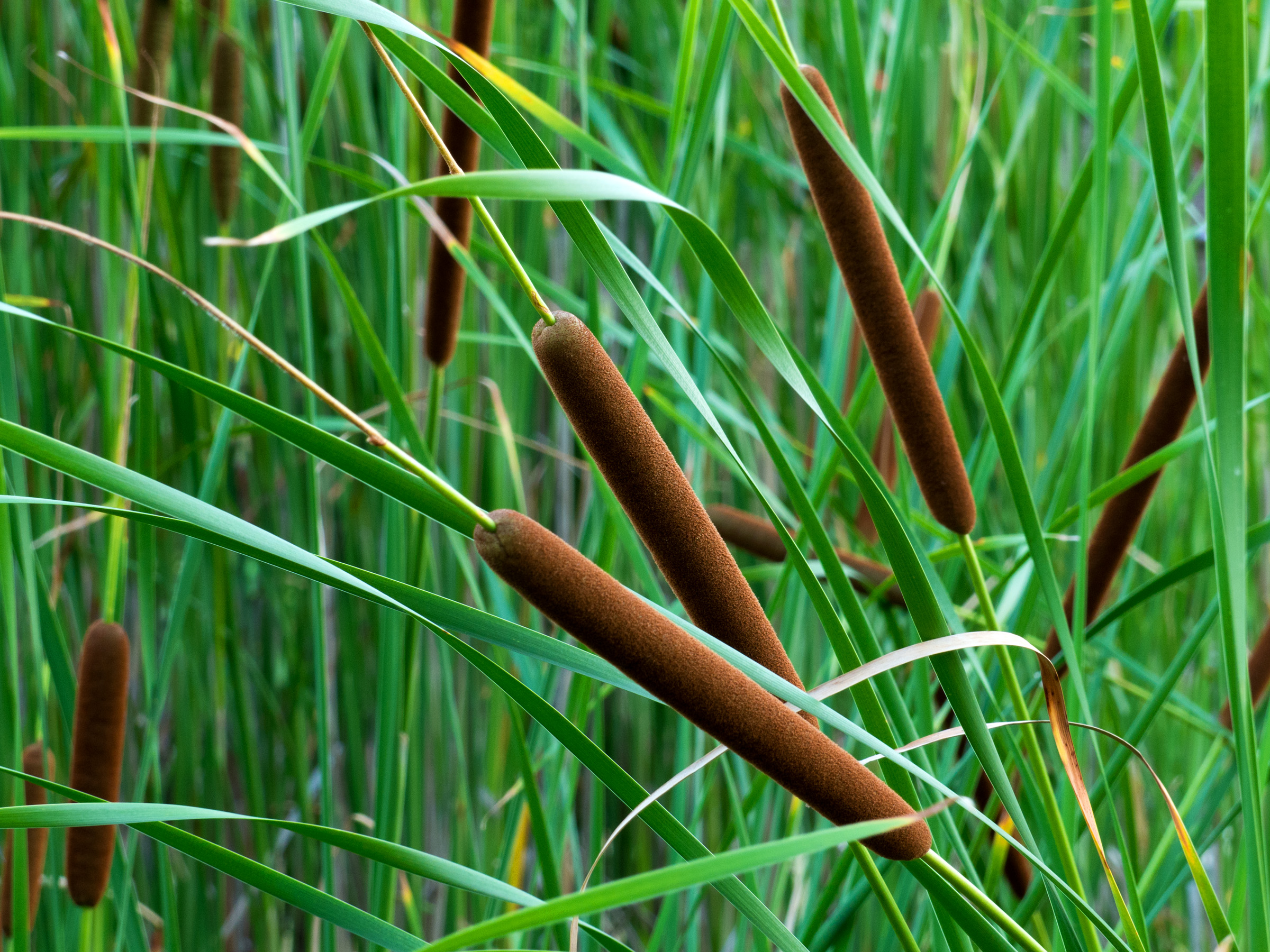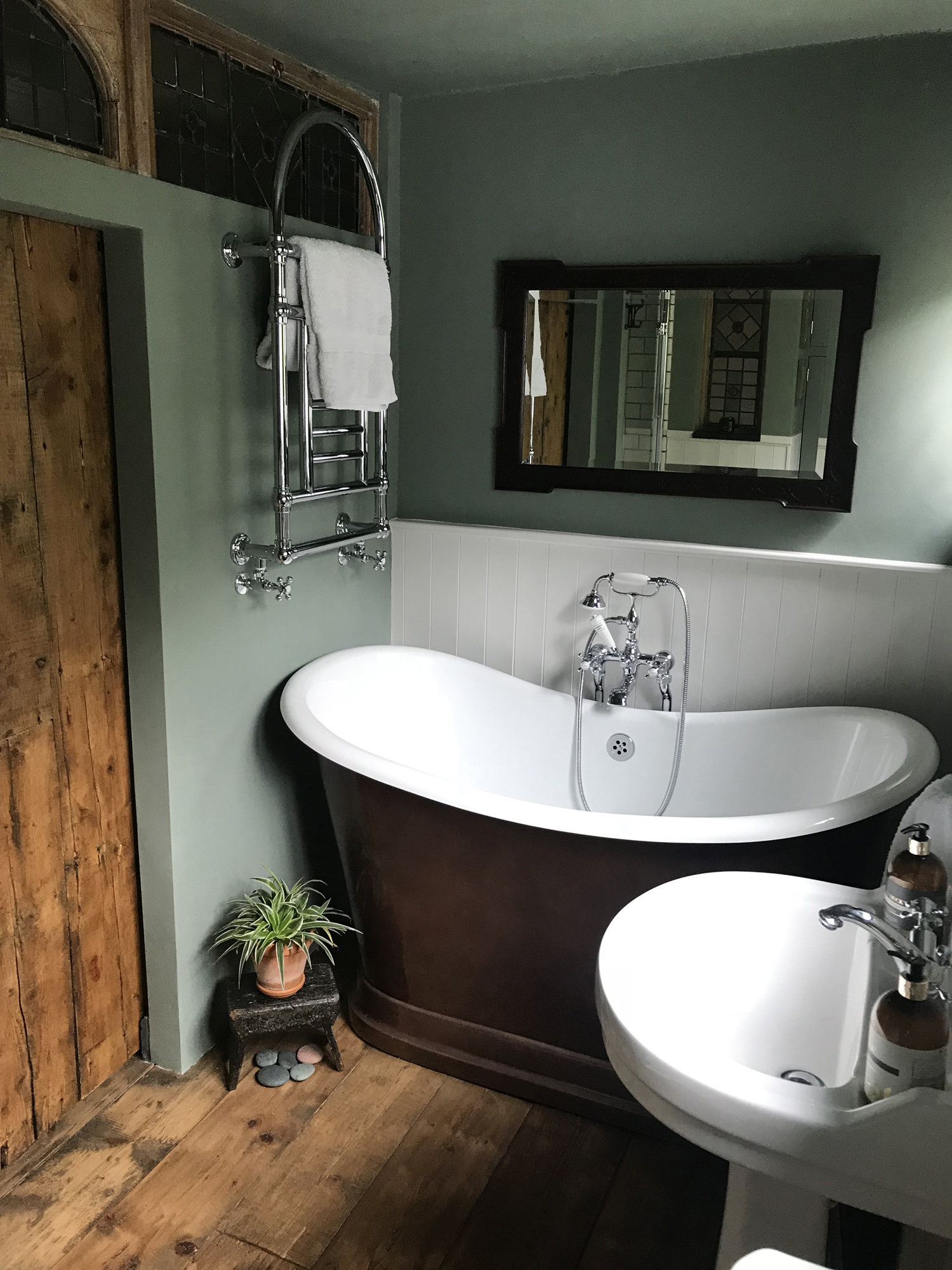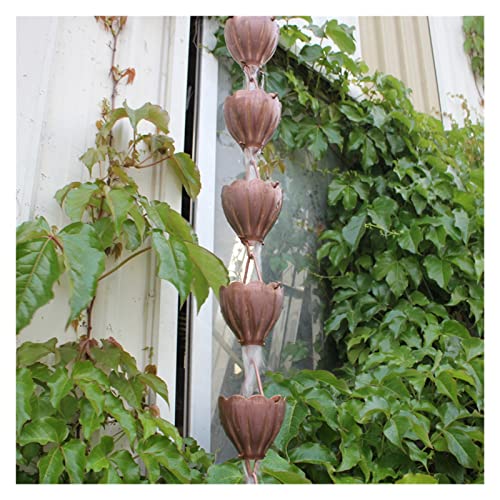Saving water: 14 proven ways to conserve water in your home and garden
Small changes, big impact: Practical ideas for saving water at home

- 1. Install a water butt
- 2. Fit low-flow taps
- 3. Upgrade to dual-flush toilets
- 4. Reed beds
- 5. Opt for compact baths
- 6. Install water leak detectors
- 7. Choose water-efficient appliances
- 8. Reuse grey water
- 9. Install a green roof
- 10. Build a soakaway
- 11. Design a water-efficient garden
- 12. Install rain chains
- 13. Embrace natural lawn cycles
- 14. Use water-saving shower heads
Saving water is more crucial than ever in the UK. Despite our rainy reputation, many regions face increasing water stress due to increased droughts and higher temperatures.
In fact, the UK government has warned that some areas could run out of drinking water within a decade.
Coupled with rising water bills in 2025 - averaging £603 per household a 27% increase from the previous year - it's imperative to adopt water-saving measures.
Here are 14 effective strategies to help you conserve water at home and in your garden:
1. Install a water butt

Rainwater harvesting by using a water butt is a simple way to save water for garden use.
This harvested water can be used for watering plants, cleaning, or even flushing toilets with the appropriate setup. It's a cost-effective method to reduce reliance on mains water.
2. Fit low-flow taps

Low-flow taps mix air with water to produce a strong stream using less water.
Bring your dream home to life with expert advice, how to guides and design inspiration. Sign up for our newsletter and get two free tickets to a Homebuilding & Renovating Show near you.
Some models offer both regular and eco settings, allowing you to switch based on your needs.
Best low-flow taps
3. Upgrade to dual-flush toilets

Dual-flush toilets offer two flush options, typically using 4-6 litres per flush compared to the 13 litres used by older models.
However, ensure they are well-maintained, as poorly functioning dual-flush mechanisms can lead to leaks, wasting significant amounts of water.
4. Reed beds

Reed beds are a natural, eco-friendly way to treat household wastewater, working alongside septic tanks.
Wastewater flows from your home into the septic tank where solids settle, then the liquid passes slowly through the reed bed. There, plants and microbes break down pollutants, producing clean water safe to return to the ground or nearby watercourses.
Melvyn Rutter of YES Reedbeds explains: “For years building control officers ignored reed beds, but they are now recognised as one of the best ecological methods for managing wastewater.”
Reed beds not only reduce reliance on mains drainage but also help protect local waterways and support biodiversity by creating habitats.

Melvyn Rutter is a reedbed consultant specialising in natural wastewater treatment solutions using reedbed filtration systems for homes, farms, businesses and industries.
5. Opt for compact baths

If you prefer baths over showers, consider installing a compact bath. These use less water while still allowing for a comfortable soak.
6. Install water leak detectors

Smart water leak detectors and alarms, like the X-Sense available on Amazon, can identify leaks early, preventing water waste and potential damage.
Some devices also monitor water usage, helping you track and reduce consumption.
7. Choose water-efficient appliances

Modern dishwashers, such as Miele's G 7160 SCVi dishwasher have water-saving features such as eco-settings that use less water.
Similarly eco-friendly washing machines, like the AEGLFX50844B Freestanding Washing Machine, use similar eco settings to
Always run these appliances with full loads to maximise efficiency.
8. Reuse grey water
Grey water is the relatively clean wastewater that comes from household sources like baths, showers, hand basins, and washing machines.
Unlike black water, which contains sewage from toilets, grey water doesn’t have human waste but may still contain soaps, detergents, oils and dirt.
Because it’s less contaminated, grey water can often be safely reused for purposes like garden irrigation, helping you save water by reducing the need for fresh tap water outdoors.
9. Install a green roof

Green roofs absorb rainwater, reducing runoff and providing insulation. They also create habitats for wildlife and improve air quality.
According to the UK Green Building Council (UKGBC), “Green roofs can reduce the amount of water entering the drainage system by up to 80%, depending on the type of system used.”
This makes them a powerful tool for water management and conservation.
10. Build a soakaway

A soakaway is a pit filled with gravel or rubble that allows rainwater to infiltrate the ground.
Building a soakaway helps save water by allowing rainwater to soak into the ground instead of going into drains. This stops clean rainwater from being wasted.
It also helps refill underground water supplies, which is important during dry weather or droughts. While a soakaway doesn’t store water like a water butt, it helps the environment by keeping water in the natural cycle.
Having a soakaway can also entitle you to a surface water drainage rebate on your water bills.
11. Design a water-efficient garden

Incorporate drought-resistant plants and group them based on their water needs.
Use mulch to retain soil moisture and consider installing drip irrigation systems for targeted watering.
12. Install rain chains
Rain chains are decorative alternatives to downspouts, guiding rainwater from gutters to storage containers or the ground.
They not only add aesthetic appeal but also promote water harvesting. Originally used in Japan, rain chains have gained popularity in the West for their functionality and design.
Brock McClelland, owner of McClellands Roofing, said: "Rain chains promote sustainable water management. By directing rainwater into barrels or storage tanks, you can collect and reuse the water for various purposes like watering plants, washing outdoor surfaces, or filling birdbaths. This reduces your reliance on municipal water sources and helps conserve resources."

Brock has extensive experience in roofing and home remodelling. Brock has established his company as a provider of services including roof inspections, repairs, replacements and installations.
Best rain chains
13. Embrace natural lawn cycles
Allowing your lawn to go brown during dry periods is a natural response to drought and doesn't harm the grass.
Spending too long watering lawns can be unnecessary and wasteful. As Alex Plant, CEO of Scottish Water, advises: "Embrace brown lawns and avoid using sprinklers amid ongoing water scarcity".
14. Use water-saving shower heads

Modern water-saving shower heads incorporate technologies like aeration and pulsation to maintain pressure while reducing water flow.
Spending more on the best electric showers can save you money in the long-term and also mean you can enjoy a satisfying shower experience while conserving water.
By implementing these strategies, you not only contribute to conserving a vital resource but also potentially help reduce your water bills.
With the UK's water infrastructure facing challenges, every effort counts towards ensuring a sustainable water future.
Hugh is editor of sister title Livingetc.com and former digital editor of homebuilding.co.uk. He has worked on a range of home, design and property magazines, including Grand Designs, Essential Kitchens, Bathrooms, Bedrooms and Good Homes. Hugh has developed a passion for modern architecture and green homes, and moonlights as an interior designer, having designed and managed projects ranging from single rooms to whole house renovations and large extensions. He's currently renovating his own Victorian terrace in Essex, DIYing as much of the work as possible. He's recently finished his kitchen renovation, which involved knocking through walls, and landscaping a courtyard garden, and is currently working on a bathroom renovation.







